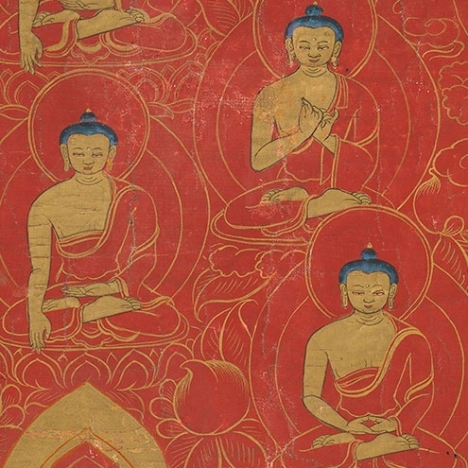
The Buddhist goddess Marichi appears in many forms. As the Goddess of the Dawn, one of her most common forms, she is depicted her in the chariot of the sun pulled by seven pigs, removing obstacles with her radiant light. This sculpture presents her as an attendant to the goddess Tara, holding a vajra in her right hand and a branch of the ashoka tree in her left.
Her round face and full lips, the patterned etching on her garments, the warm patina of the gilding, the finesse of the ornaments, such as her distinctive lotus-jewel crown and S-curve armlets, as well as the multileveled lotus base are all characteristic of Mongolian sculpture attributed to the exceptional Mongolian artist Zanabazar (1635–1723) and his workshop. Zanabazar was Mongolia’s first incarnate lama and leader of Mongolian Buddhism, who founded a sculptural style that continues to have a profound influence to this day.
This figure was most likely placed to the right of a sculpture of Tara, which would have stood at the head of a set of 21 sculptures representing her various forms. This Marichi might have once been part of an existing set in the collection of the Bogdo Khan Palace Museum in Ulaanbaatar, Mongolia.
This artwork is on view in the Masterworks of Himalayan Art exhibition from April 19, 2019–March 23, 2020.
H 15 5/8 x W 10 3/8 x D 7 1/4 in.
C2005.16.26, HAR65449
- https://dev.rubinmuseum.org/images/content/749/03.29.19_art_of_the_week_march_goddess_of_the_dawn_marichi_ep_master__zoom.png
- https://dev.rubinmuseum.org/images/content/749/03.29.19_art_of_the_week_march_goddess_of_the_dawn_marichi_ep_master__zoom.png


